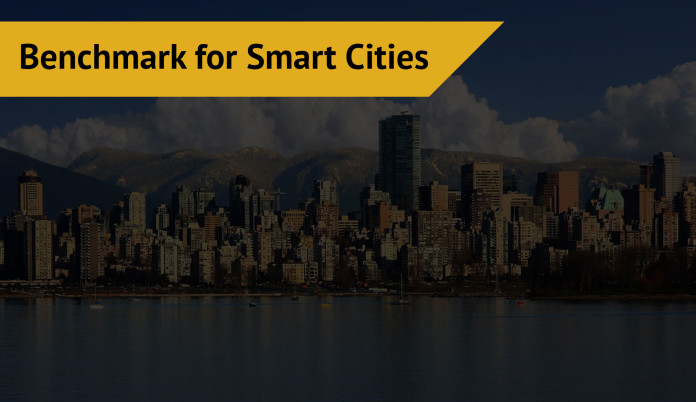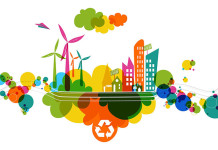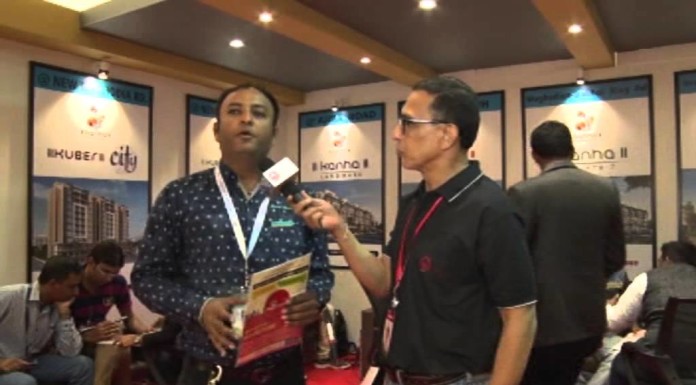Government of India has set 13 parameters to create a benchmark for developing smart cities. These are:
The maximum travel time between two points in the city should be between 30 and 45 minutes. The city should have a population density of 175 persons per hectare along transit corridors, every household should have 24 x 7 water supply, access to toilets, waste to be collected from door-step daily, electricity connection, telephone connection including mobile phones, wi-fi connectivity, 30 minutes healthcare emergency response time and other amenities. The smart city should have sufficient number of schools, colleges and educational institutes. There must be one fire station per 2 lakh population. The city ought to have a provision for use of renewable energy in all sectors.
| Sl.No. |
Parameter |
Benchmark |
| A |
Transport |
- Maximum travel time of 30 minutes in small & medium size cities and 45 minutes in metropolitan areas
- Continuous unobstructed footpath of minimum 2m wide on either side of all street with Row 12m or more
- Dedicated and physically segregated bicycle tracks with a width of 2mor more, one in each direction, should be provided on all streets with carriage way larger than 10m (not ROW)
- High quality and high frequency mass transport within 800m(10-15 minute walking distance) of all residences in areas over 175persons / ha of built area
- Access to Para-transit within 300m walking distance.
|
| B. |
Spatial Planning |
- 175 persons per Ha along transit corridors.
- 95% of residences should have daily needs retail, parks, primary schools and recreational areas accessible within 400m walking distance.
- 95% residences should have access to employment and public and institutional services by public transport or bicycle or walk
- At least 20% of all residential units to be occupied by economically weaker sections in each Transit Oriented Development Zone 800m from Transit Stations
- At least 30% residential and 30%
- commercial/institutional in every TOD Zone within
- 800m of Transit Stations
|
| C. |
Water Supply |
- 24 x 7 supply of water
- 100% household with direct water supply connections
- 135 litres of per capita supply of water
- 100% metering of water connections
- 100% efficiency in collection of water related charges
|
| D. |
Sewerage &Sanitation |
- 100% households should have access to toilets
- 100% schools should have separate toilets for girls
- 100% households should be connected to the waste water network
- 100% efficiency in the collection and treatment of waste water
- 100% efficiency in the collection of sewerage network
|
|
| E. |
Solid Waste
Management |
- 100% households are covered by daily door-step collection system.
- 100% collection of municipal solid waste
- 100% segregation of waste at source, i.e. bio- degradable and non-degradablewaste
- 100% recycling of solid waste
|
| F. |
Storm Water
Drainage |
- 100% coverage of road network with storm water drainage network
- Aggregate number of incidents of water logging reported in a Year = 0
- 100% rainwater harvesting
|
| G. |
Electricity |
- 100% households have electricity connection
- 24 x 7 supply of electricity
- 100% metering of electricity supply
- 100% recovery of cost
- Tariff slabs that work towards minimizing waste
|
| H. |
Telephone connections |
- 100% households have a telephone connection including mobile
|
| I. |
Wi-Fi Connectivity |
- 100% of the city has Wi-Fi connectivity
- 100 Mbps internet speed
|
| J. |
Health Care Facilities |
- Availability of telemedicine facilities to 100% residents
- 30 minutes emergency response time
- 1 dispensary for every 15,000 residents
- Nursing home, child, welfare and maternity, centre – 25 to 30 beds per lakh population
- Intermediate Hospital (Category B) – 80 beds per lakh population
- Intermediate Hospital (Category A) – 200 beds per lakh population
- Multi-Speciality Hospital – 200 beds per lakh population
- Speciality Hospital – 200 beds per lakh population
- General Hospital – 500 beds per lakh population
- 10020Family Welfare Centre for every 50,000 residents
- 1 Diagnostic centre for every 50,000 residents
- 1 Veterinary Hospital for every 5 lakh residents
- 1 Dispensary for pet for every 1 lakh residents
|
| K. |
Education |
| 1. |
Pre Primary to
Secondary Education |
- Area equivalent to 15% of residential area for building hospitals
- 1 Pre Primary/ Nursery School for every 2,500 residents
- 1 Primary School (class I to V) for every 5,000 residents
- 1 Senior Secondary School (Cass VI to XII) for every, 500 residents
- 1 integrated school (Class I to XII) per lakh of population
- 1 school for physically challenged for every 45,000 residents
- 1 school for mentally challenged for 10 lakh population
|
| 2. |
Higher Education |
- 1 college per 1.25 lakh population
- 1 university
- 1 technical education centre per 10 lakh population
- 1 engineering college per 10 lakh population
- 1 medical college per 10 lakh population
- 1 other professional college per 10 lakh population
- 1 paramedical institute per 10 lakh population
- 1 veterinary institute
|
| L. |
Fire Fighting |
- 1 fire station per 2 lakh population / 5-7km radium
- 1 sub – fire station with 3-4 km radius
|
| M. |
Others |
- Use of renewable energy in all sectors
- Rooftop solar panels on all public, institutional and commercial buildings as well as multi storied residential housings
- Adherence to green building norms
- Common ducting for all services
- Double entry accounting on real time basis
- 3D maps on GIS of property and all services –power, water supply, sewerage etc
- Cities to formulate building and parking standards
|











![PROPREALITY & REFUTURE TEAM WITH THE LEGEND OF REAL ESTATE “BAKERI GROUP[ MR. PAWAN BAKERI]”](http://propreality.com/wp-content/uploads/2018/02/maxresdefault-7-80x60.jpg)




